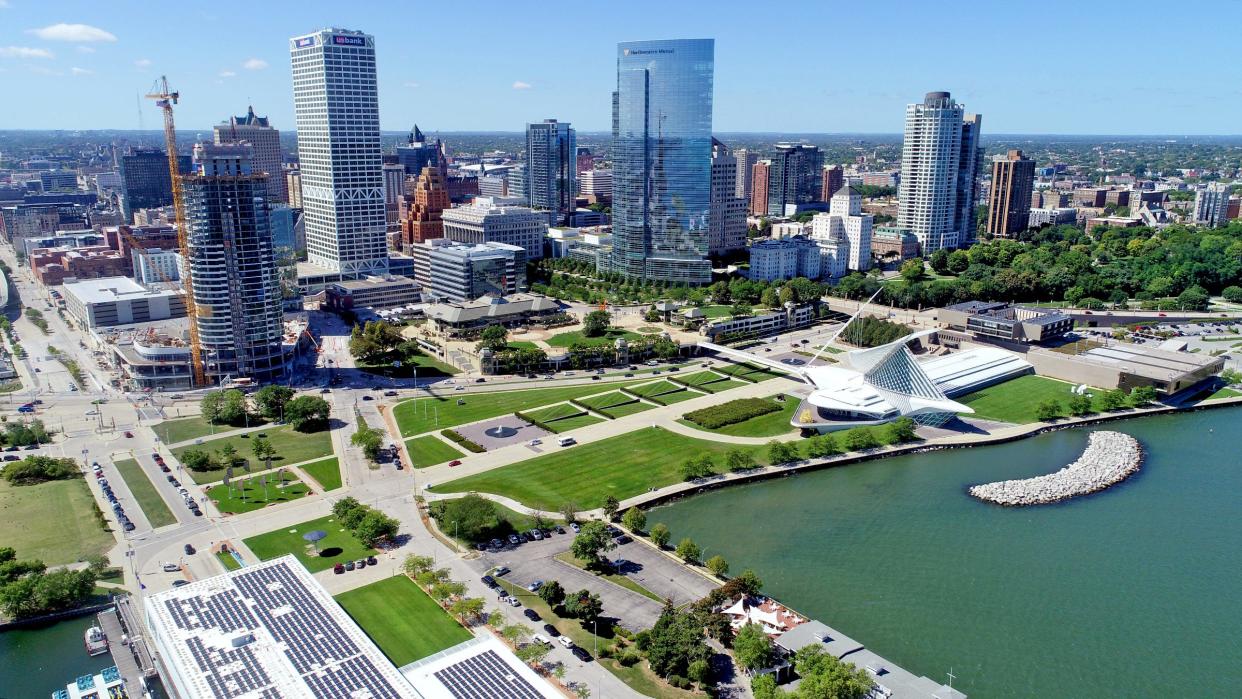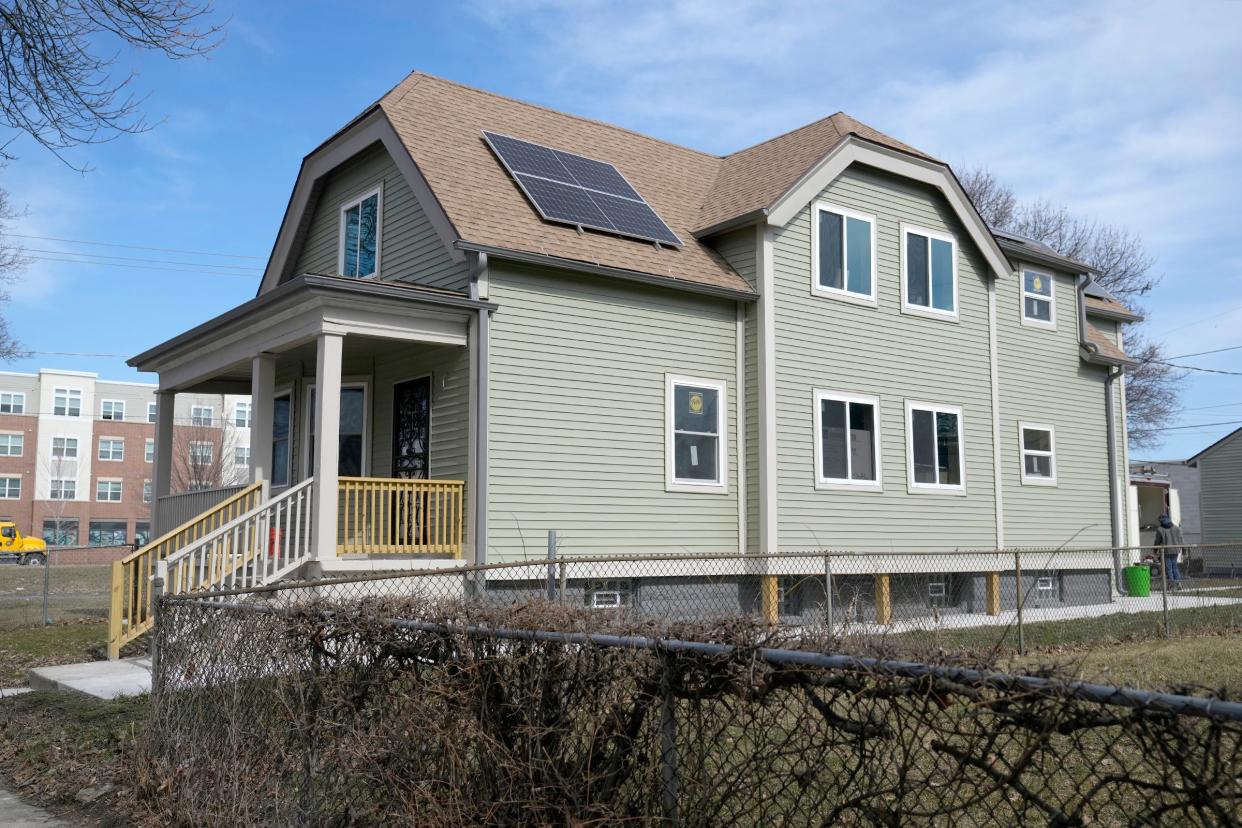City Hall unveils a new plan to grow Milwaukee. That comes from developing more housing

Mayor Cavalier Johnson's administration has unveiled a plan to grow Milwaukee's population − by changing the city's zoning rules to encourage more housing development.
That draft policy, known as Growing MKE, needs Common Council approval.
City officials are seeking public input about Growing MKE. They say the plan encourages new housing construction, especially affordable homes, while improving Milwaukee's climate change resilience.
Here's what to know.
Growing MKE stems from a stretch goal of 1 million residents
Growing MKE was drafted two years after Johnson first discussed his vision of eventually increasing Milwaukee's population to 1 million.
In 2020, the Census counted just over 577,000 people living in the city. That's a 22% decline from the city's peak, in 1960, of more than 741,000 residents.
Milwaukee is the nation's 31st-largest city, placing it just behind Baltimore, Maryland, and just ahead of Albuquerque, New Mexico, according to the Census. With 1 million residents, it would be ranked at No. 10 − ahead of such cities as Austin, Texas; Jacksonville, Florida, and San Jose, California.
Note: Johnson and other city officials claim the 2020 Census undercounted Milwaukee. They say a more accurate estimate puts the population at around 593,000.
Several factors caused population decline
Milwaukee's population decline since the 1960s is linked to long-term trends that have affected other older Midwestern cities.
Those include a decline in birth rates. Families are having fewer children today compared to 60 years ago.
Also, Milwaukee has lost thousands of industrial jobs since the early '80s. That includes the A.O. Smith Corp./Tower Automotive Inc. factory closing on the city's north side. It's now home to Century City Business Park − where development has lagged.
Another factor is the migration of families to the suburbs − propelled in part by "white flight" as more Black and Latino people moved to Milwaukee.
Growing MKE focuses mainly on housing
Growing MKE focuses on updates to city policies on housing and neighborhoods, and proposed changes to zoning, to encourage housing choice and growth.
Milwaukee’s zoning code was rewritten in 2002 and the citywide housing policy plan was adopted in 2010. Milwaukee since has seen significant changes.
"While many elements of the code are working, a detailed analysis showed that barriers to housing growth remain," the plan says.
"Innovative zoning code updates are necessary to meet the city’s goals for housing choice, equity, affordability, economic development, and climate resiliency," it says.

Zoning changes would encourage density
Growing MKE's suggested zoning changes would encourage greater density in a city where 40% of the land is restricted to single-family homes. That increased density would include such "neighborhood scale" housing as duplexes, triplexes, townhouses, and buildings with four to eight apartments.
Other forms of housing could include tiny homes, such as Veterans Community Project Inc.'s development planned at 6767 N. 60th St., and accessory dwelling units. The latter refers to a house or apartment that shares the building lot of a larger, primary home.
Another change would encourage more apartments by eliminating floor area ratios − which typically limit a building's floor area in relation to the size of its lot. Instead, zoning would set height limits, setbacks and design standards for apartment buildings.
More housing means increased property tax revenue for the city, Milwaukee Public Schools and other local governments, and additional customers for stores, restaurants and other businesses.
More housing means greater affordability
More density should help meet the city's goal of increasing its affordable housing supply. That comes as Wisconsin's housing supply hasn't grown fast enough to keep up with demand.
Zoning codes that restrict housing "can increase housing costs for everyone," according to Growing MKE.
Removing barriers which perpetuate racial and economic segregation, and allowing a wider mix of housing types "aim to improve equity by increasing the amount of affordable and attainable housing for all," it says.
Milwaukee has a growing number of single-person households, including seniors. That indicates a need to build more smaller housing units, the plan says.
Growing MKE takes into account climate change
Growing MKE also takes into account the link between climate change and land use and transportation planning.
"As we face climate change, opportunities to make it easier for people to walk, use transit, and bike are critical to reduce the amount and impact of driving," the plan says.
"There is increasing consensus that compact urban neighborhoods with a mix of uses and housing choices are the most effective at reducing carbon emissions," it says.
City officials last year approved a climate and equity strategy.
City Hall wants input from Milwaukee residents, others
Growing MKE is a draft plan. City officials are seeking public input that could bring possible changes before the Common Council reviews it.
Public comments are being accepted online through May 29, at three May open houses, and during office hours at Milwaukee library branches and senior centers in May. More information can be found at the Growing MKE website.
Growing MKE will be presented to the Plan Commission and Common Council this summer for their review.
Department of City Development staff will then prepare proposed zoning code updates to implement Growing MKE's recommendations. Those also will require council action.
Tom Daykin can be emailed at tdaykin@jrn.com and followed on Instagram, X and Facebook.
Subscribe to get the BusinessWatch email newsletter.
This article originally appeared on Milwaukee Journal Sentinel: Growing MKE plan designed to develop more Milwaukee housing

